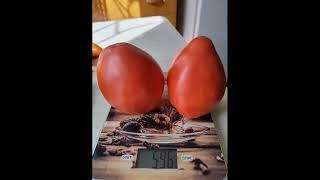To achieve optimal cotton harvest and productivity:
1. _Variety selection_: Choose high-yielding, disease-resistant varieties suitable for your region.
2. _Soil preparation_: Ensure well-draining, fertile soil with optimal pH (5.5-7.0).
3. _Water management_: Maintain consistent moisture levels, avoiding waterlogging.
4. _Fertilization_: Apply balanced fertilizers (NPK) during growth stages.
5. _Pest and disease management_: Monitor regularly and apply control measures as needed.
6. _Pruning and training_: Prune and train plants to promote healthy growth and fruiting.
7. _Irrigation scheduling_: Schedule irrigation based on soil moisture levels and crop water requirements.
8. _Harvest timing_: Harvest cotton at optimal maturity, typically 150-180 days after planting.
9. _Mechanized harvesting_: Use efficient harvesting machinery to reduce labor costs and improve quality.
10. _Post-harvest handling_: Handle cotton carefully to prevent damage and maintain quality.
Additionally, consider:
- _Crop rotation_: Rotate cotton with other crops to maintain soil fertility and reduce pests.
- _Mulching_: Mulch around plants to retain moisture, suppress weeds, and regulate soil temperature.
- _Integrated pest management_: Combine physical, cultural, and biological controls for sustainable pest management.
- _Precision agriculture_: Utilize precision agriculture techniques, such as GPS and drones, to optimize inputs and reduce waste.
By implementing these strategies, you can:
- Increase yields by 20-30%
- Improve fiber quality
- Enhance water and nutrient efficiency
- Reduce soil-borne diseases
- Promote sustainable agriculture practices.
1. _Variety selection_: Choose high-yielding, disease-resistant varieties suitable for your region.
2. _Soil preparation_: Ensure well-draining, fertile soil with optimal pH (5.5-7.0).
3. _Water management_: Maintain consistent moisture levels, avoiding waterlogging.
4. _Fertilization_: Apply balanced fertilizers (NPK) during growth stages.
5. _Pest and disease management_: Monitor regularly and apply control measures as needed.
6. _Pruning and training_: Prune and train plants to promote healthy growth and fruiting.
7. _Irrigation scheduling_: Schedule irrigation based on soil moisture levels and crop water requirements.
8. _Harvest timing_: Harvest cotton at optimal maturity, typically 150-180 days after planting.
9. _Mechanized harvesting_: Use efficient harvesting machinery to reduce labor costs and improve quality.
10. _Post-harvest handling_: Handle cotton carefully to prevent damage and maintain quality.
Additionally, consider:
- _Crop rotation_: Rotate cotton with other crops to maintain soil fertility and reduce pests.
- _Mulching_: Mulch around plants to retain moisture, suppress weeds, and regulate soil temperature.
- _Integrated pest management_: Combine physical, cultural, and biological controls for sustainable pest management.
- _Precision agriculture_: Utilize precision agriculture techniques, such as GPS and drones, to optimize inputs and reduce waste.
By implementing these strategies, you can:
- Increase yields by 20-30%
- Improve fiber quality
- Enhance water and nutrient efficiency
- Reduce soil-borne diseases
- Promote sustainable agriculture practices.
- Категория
- Севооборот
Комментариев нет.




